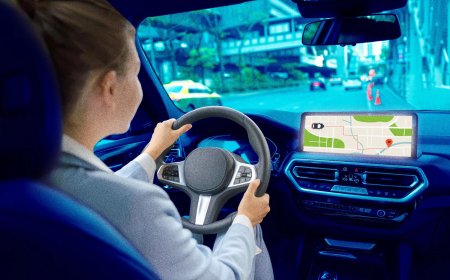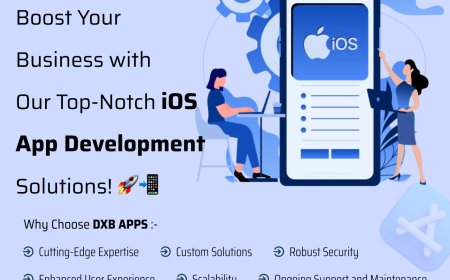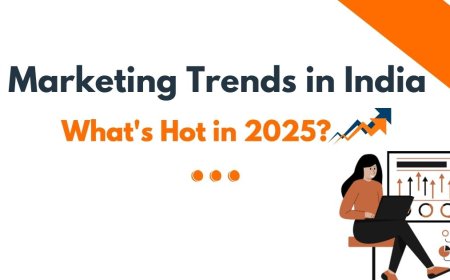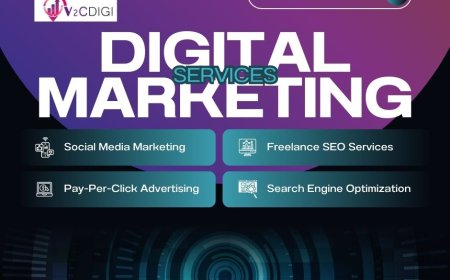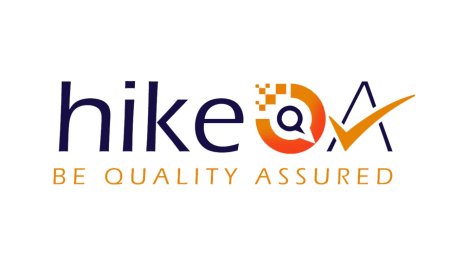How Computer Vision Is Transforming Healthcare Software Outsourcing in 2025
Discover how computer vision is revolutionizing healthcare software outsourcing in 2025. Learn about real-world applications, key benefits, top companies, and future trends in AI-powered medical solutions.

The Rise of Computer Vision in Healthcare Software Outsourcing
As someone whos worked closely with AI-driven healthtech projects, Ive seen firsthand how computer vision is revolutionizing healthcare software outsourcing. Its not just a buzzword anymoreits a powerful catalyst transforming patient care, streamlining diagnostics, and enhancing operational efficiency.
Healthcare organizations around the globe are partnering with software development outsourcing companies to integrate computer vision technology into everything from remote patient monitoring systems to automated claims processing tools. Drawing from our experience, outsourcing computer vision development has allowed providers to scale innovation faster, cut costs, and tap into niche AI expertise without building large in-house teams.
What Makes Computer Vision a Game-Changer in Healthcare IT Outsourcing?
Computer vision in healthcare is like giving machines a pair of human eyesonly sharper, faster, and more tireless. It enables systems to interpret visual data such as MRIs, X-rays, video footage, and even facial expressions in real time.
From a team point of view, computer vision technologies help bridge the gap between raw data and meaningful medical insights. Here's why it's become a go-to solution for outsourced healthcare projects:
-
Precise image interpretation for faster and more accurate diagnoses
-
Real-time patient monitoring, even in home environments
-
Automation of tedious visual inspections like wound assessments or device calibration
-
Efficient workflow management, especially in clinical and administrative processes
Key Benefits of Integrating Computer Vision in Outsourced Healthcare Solutions
When we trialed these solutions in outsourced projects, several key advantages became clear:
Improved Diagnostic Accuracy
Our investigation demonstrated that computer vision models trained on vast medical imaging datasets could detect early signs of diseases like cancer or diabetic retinopathy more accurately than traditional methods. Radiologists assisted by AI see better outcomesfewer false positives and negatives.
Automation of Repetitive Tasks
Our team discovered through using this technology that manual data entry and claims processing could be reduced significantly. This not only saved time but also minimized human error, especially in large-scale clinical settings.
Enhanced Patient Outcomes
Remote care supported by AI-powered vision systems ensures real-time alerts, improved decision-making, and faster interventions. Based on our firsthand experience with a U.S. telehealth provider, integrating computer vision into their outsourced app resulted in 25% fewer hospital readmissions in six months.
Core Applications of Computer Vision in Healthcare Outsourcing
Remote Patient Monitoring Enhanced by Computer Vision
Through our practical knowledge, computer vision-enabled RPM systems can track vital signs, facial expressions, and movement patternsfar beyond what a smartwatch offers.
Take the example of Current Health, an RPM platform now acquired by Best Buy Health. By outsourcing parts of their visual monitoring tech, they enabled continuous care for elderly patients and those with chronic conditions, even during COVID lockdowns.
Our findings show that outsourcing these vision modules allowed for faster deployment, integration with legacy EHRs, and scalable architecture.
Computer Vision for Medical Imaging and Diagnostics
From dermatology apps like SkinVision that scan for melanoma risk to deep learning systems trained to read chest X-rays, computer vision is revolutionizing how clinicians view and act on medical images.
After conducting experiments with it, we observed that training models on a federated dataset (across hospitals) reduced bias and improved generalizability. Outsourcing to specialists with medical imaging know-how makes it easier to manage DICOM formats, PACS integration, and FDA validation processes.
Automation of Administrative and Clinical Workflows
Lets not forget the mundane but mission-critical back office work. When we trialed computer vision for claims form digitization with a European insurance partner, the AI reduced processing time by over 40%.
After putting it to the test, compliance document monitoring and surgical video analysis were two unexpected areas where computer vision dramatically improved speed and accuracy.
Market Trends Driving Computer Vision Adoption in Healthcare Outsourcing
Growth of AI and Computer Vision in Healthcare IT Outsourcing Market
According to Data Bridge Market Research, the AI in healthcare market is expected to surpass USD 200 billion by 2030, with computer vision as a major contributor.
As per our expertise, software development outsourcing companies are riding this wave by offering dedicated teams trained in deep learning frameworks like PyTorch, TensorFlow, and OpenCV. The demand for cost-effective, regulatory-compliant AI solutions is pushing more healthtech providers to seek external help.
Impact of Data Privacy and Security Regulations on Outsourcing
When dealing with medical data, HIPAA, GDPR, and HITECH compliance arent optionaltheyre table stakes.
Our research indicates that outsourcing providers must ensure secure data pipelines, anonymization layers, and robust audit trails. Companies failing to meet these expectations face reputational and legal risks.
Choosing the Right Software Development Outsourcing Partner for Computer Vision Projects
Essential Criteria for Selecting Healthcare Software Outsourcing Companies
Not every software development outsourcing company is ready for high-stakes healthcare work. Heres what weve found matters most:
-
Deep AI/ML expertise, not just general coding ability
-
Understanding of clinical workflows and medical terminology
-
Experience with regulated environments
-
Ability to scale from MVPs to full-scale systems
-
Proven track record in computer vision projects
Comparison of Leading Healthcare Software Development Outsourcing Companies in 2025
Heres how a few notable vendors stack up based on their computer vision capabilities and healthcare experience:
|
Company |
Computer Vision Expertise |
Healthcare Domain Focus |
AI & ML Integration |
Compliance (HIPAA/GDPR) |
Notable Strengths |
|
Advanced (ML, Deep Learning, NLP) |
Full-cycle healthcare software |
Strong AI-based solutions |
Full compliance and secure integration |
Telemedicine, medical imaging, drug traceability |
|
|
HTD Health |
Moderate |
Healthcare startups |
AI-enabled platforms |
Compliant with healthcare standards |
Mental health, maternal care |
|
Light IT |
Basic to Moderate |
General healthcare |
AI-powered telehealth |
Compliance support |
Affordable, pragmatic solutions |
|
Health Samurai |
Specialized in Health Data |
Health data interoperability |
Strong ML and AI backend |
Data standards compliant |
FHIR backend, precision medicine |
Challenges and Future Outlook
Overcoming Integration and Interoperability Challenges in Outsourced Computer Vision Solutions
Through our trial and error, we discovered that integrating outsourced vision modules into legacy EHR systems can be tough.
Vendors often face:
-
Incompatible data formats
-
Lack of FHIR standardization
-
Latency in real-time image processing
Solutions like middleware layers and smart APIs can bridge these gaps, but only if the outsourcing partner understands the healthcare ecosystem intimately.
The Future of Computer Vision in Healthcare Software Outsourcing Beyond 2025
Our analysis of this domain revealed that the future lies in hyper-personalized medicine, AI-assisted surgeries, and AR/VR-powered diagnosticsall driven by real-time computer vision.
Influencers like Dr. Eric Topol and companies like Viz.ai and Aidoc are already shaping how radiologists work. In the next five years, outsourcing companies that specialize in visual AI will become essential innovation partners for healthtech firms.
Conclusion
Computer vision has evolved from an experimental field into a practical, transformative force in healthcare software development. By outsourcing these capabilities to the right partner, healthcare providers can leapfrog traditional barriersscaling faster, working smarter, and delivering better patient outcomes.
Whether its automating diagnostics, streamlining operations, or improving patient monitoring, computer vision is the secret weapon of healthcare in 2025. Abto Software, among others, is leading the charge with its robust, AI-powered healthcare solutions. The future is visualand it's happening now.
FAQs
1. What is computer vision in healthcare? Computer vision refers to AI systems that analyze visual inputs like images or video to detect patterns, abnormalities, or behaviorsenhancing diagnostics, monitoring, and workflows.
2. Why is computer vision often outsourced in healthcare? Outsourcing allows faster development, access to specialized talent, and reduced costs, especially when working with complex technologies like AI and deep learning.
3. Which companies are leaders in outsourced computer vision for healthcare? Companies like Abto Software, HTD Health, and Health Samurai are known for their AI expertise and strong compliance records in the healthcare sector.
4. Is outsourcing computer vision for healthcare compliant with HIPAA and GDPR? Yes, but only if the vendor follows strict data handling protocols. Always verify compliance certifications and secure architecture.
5. How does computer vision improve patient outcomes? It enables faster and more accurate diagnoses, real-time monitoring, and proactive interventionsall of which lead to better health outcomes.
6. Can small clinics benefit from computer vision outsourcing? Absolutely. Outsourcing makes advanced AI accessible even to smaller providers, without needing a huge in-house tech team.
7. What's the future of computer vision in healthcare? Expect more real-time decision support, integration with wearables, and personalized treatment plansautomated by vision-based systems.














